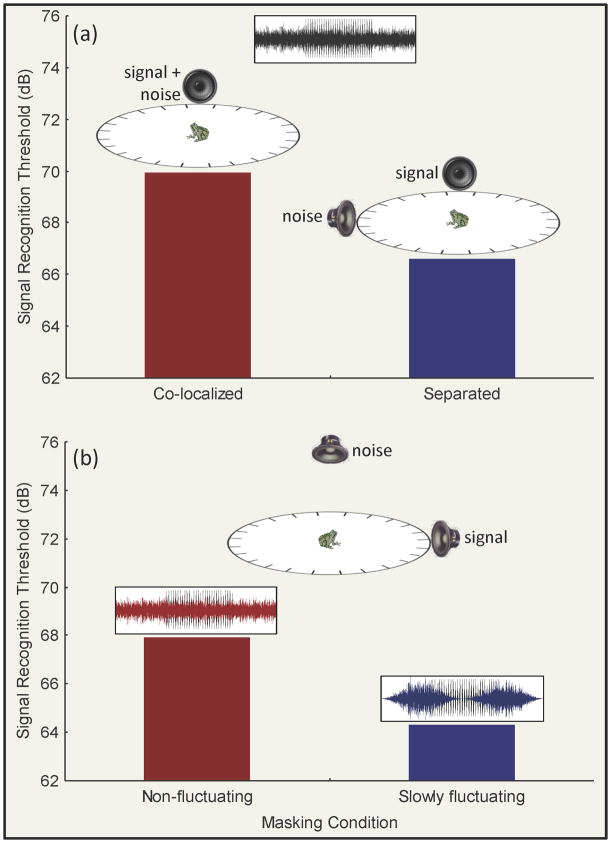Figure 2.
Release from auditory masking in frogs. In the social environment of a breeding chorus, frogs must often contend with high levels of background noise that potentially masks signals of interest. Recent behavioral studies of female Cope’s gray treefrogs (Hyla chrysoscelis) have used adaptive tracking procedures to investigate release from auditory masking in the presence of chorus-like noise by measuring “signal recognition thresholds” (defined as the lowest signal level that elicits phonotaxis) [23, 29, 56] under various listening conditions. (a) When conspecific calls (signals) and chorus-like noise were separated by 90° around a 2-m-diameter circular test arena, signal recognition thresholds were about 4 dB lower compared to conditions in which the same signals and noise were co-localized [23]. (b) Subjects also experienced about 4 dB of masking release when they listened for pulsed advertisement calls presented in chorus-like noise that slowly fluctuating (e.g., sinusoidally amplitude modulated (SAM) noise; 1.25 Hz) compared to when listening in a non-fluctuating, “flat” noise condition [29]. Together, results from such studies indicate that the frog auditory system can exploit spatial separation between signals and noise and temporal fluctuations in background noise levels in recognizing conspecific calls. (Note: Frogs, speakers, and test arenas not drawn to scale.)

